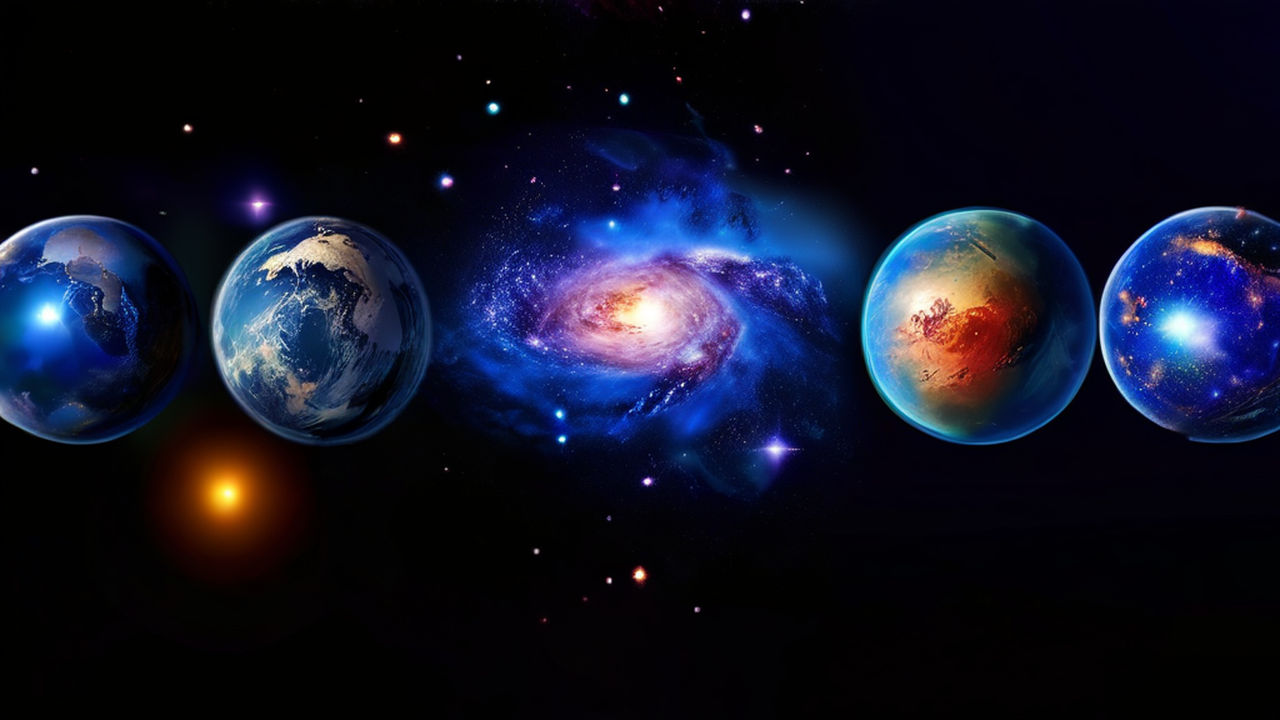Introduction
Understanding the Vastness of the Universe
The universe, with its incomprehensible size and complexity, has been a subject of fascination for humanity since ancient times. From the twinkling stars in the night sky to the awe-inspiring galaxies millions of light-years away, the universe continues to captivate our imagination.
The Fascination with Galaxies
Among the countless wonders of the cosmos, galaxies stand out as some of the most captivating and enigmatic structures. These vast collections of stars, gas, dust, and dark matter come in a variety of shapes and sizes, each holding its own secrets and mysteries waiting to be unraveled by curious minds.
What is a Galaxy?
Defining a Galaxy
A galaxy is a vast system of stars, stellar remnants, interstellar gas, dust, dark matter, and other celestial objects bound together by gravity. These cosmic entities come in various shapes and sizes, ranging from small dwarf galaxies to massive spiral and elliptical galaxies.
Components of a Galaxy
Galaxies comprise several essential components, each playing a crucial role in their structure and dynamics.
- Stars: Stars are the luminous bodies within galaxies, formed from collapsing clouds of gas and dust. They vary in size, temperature, and brightness, illuminating the vastness of space with their brilliance.
- Planets: While planets primarily orbit stars within solar systems, they also exist within galaxies. However, planets are relatively small compared to stars and often constitute a tiny fraction of a galaxy’s total mass.
- Dust: Interstellar dust consists of microscopic particles scattered throughout galaxies, contributing to the obscuration of light and the formation of celestial phenomena such as nebulae.
- Dark Matter: Dark matter is a mysterious and invisible substance that exerts gravitational influence on visible matter within galaxies. Although it does not emit or interact with light, its presence is inferred through its gravitational effects on stars and galaxies.
- The Gravitational Force that Holds Galaxies Together: Gravity plays a fundamental role in shaping the structure of galaxies, holding stars, gas, dust, and dark matter together in cohesive structures. This gravitational force prevents galaxies from dispersing into space and maintains their integrity over billions of years.
Understanding the components of a galaxy provides insight into the intricate mechanisms governing these cosmic systems and their evolution over cosmic time.
Classification of Galaxies
Edwin Hubble’s Contribution to Galaxy Classification
Edwin Hubble, an American astronomer, revolutionized our understanding of galaxies through his groundbreaking work on galaxy classification. Using observations from the Mount Wilson Observatory in the 1920s, Hubble devised a systematic classification scheme that categorized galaxies based on their shapes and structures.
The Hubble Sequence
The Hubble Sequence, also known as the Hubble Tuning Fork diagram, is a classification scheme proposed by Edwin Hubble to categorize galaxies according to their visual appearance. This sequence organizes galaxies into different classes based on their morphological features, such as their shapes, sizes, and structures.
Three Main Types of Galaxies
Galaxies are broadly classified into three main types based on their morphological characteristics: elliptical galaxies, spiral galaxies, and irregular galaxies. Each type exhibits distinct features and properties, providing valuable insights into the diversity of galactic structures within the universe.
Elliptical Galaxies
Characteristics of Elliptical Galaxies
Elliptical galaxies are characterized by their smooth, ellipsoidal shapes and lack of prominent spiral arms or disks. They often appear as featureless, diffuse blobs of stars, with little interstellar material present. Elliptical galaxies range in size from small dwarf ellipticals to massive giant ellipticals, and their stars exhibit random orbits within the galaxy’s gravitational field.
Formation Theories
The formation of elliptical galaxies is still a topic of active research and debate among astronomers. Some theories suggest that they may form through the merger and interaction of smaller galaxies, while others propose that they originate from the gravitational collapse of large gas clouds in the early universe.
Spiral Galaxies
Structure of Spiral Galaxies
Spiral galaxies are characterized by their prominent spiral arms extending outward from a central bulge. These arms contain young, hot stars, interstellar gas, and dust, giving spiral galaxies their distinctive appearance. The central bulge of a spiral galaxy typically houses older stars and may contain a supermassive black hole at its core.
Notable Examples
Several notable examples of spiral galaxies exist within the universe, including the Milky Way, the Andromeda Galaxy (M31), and the Whirlpool Galaxy (M51). These galaxies serve as prime examples for studying the structure and dynamics of spiral arms and the formation of stars within them.
Irregular Galaxies
Unique Features of Irregular Galaxies
Irregular galaxies lack the symmetrical shapes and structures observed in elliptical and spiral galaxies. Instead, they exhibit chaotic and irregular shapes, often resulting from gravitational interactions with neighboring galaxies. Irregular galaxies may contain regions of intense star formation, as well as massive star clusters and nebulae.
Examples from the Universe
Examples of irregular galaxies abound in the universe, with the Large and Small Magellanic Clouds being prominent examples in the Milky Way’s vicinity. These galaxies offer valuable insights into the effects of gravitational interactions and the role of irregularities in galactic evolution.
Understanding the classification of galaxies provides astronomers with a framework for studying the diverse array of cosmic structures and unraveling the mysteries of the universe.
Elliptical Galaxies
Shape and Structure
Elliptical galaxies derive their name from their elliptical or oval-like shapes, which lack the distinct spiral arms observed in spiral galaxies. They often appear as smooth, featureless blobs of stars, with a centrally concentrated distribution of stellar matter. Unlike spiral galaxies, elliptical galaxies typically lack prominent disks or rotational motion.
Stellar Populations within Elliptical Galaxies
The stellar populations within elliptical galaxies primarily consist of older stars, with little ongoing star formation. These galaxies are dominated by populations of red and yellow stars, indicative of their advanced age. Elliptical galaxies also contain a significant population of globular clusters—dense groupings of stars bound together by gravity—which orbit the galactic center.
Sizes and Masses of Elliptical Galaxies
Elliptical galaxies exhibit a wide range of sizes and masses, spanning from small dwarf ellipticals to massive giant ellipticals. Dwarf ellipticals are relatively small and faint, with lower masses and fewer stars compared to their larger counterparts. Giant elliptical galaxies, on the other hand, are among the largest and most massive galaxies in the universe, containing trillions of stars and vast amounts of dark matter.
Formation Mechanisms
The formation mechanisms of elliptical galaxies remain a subject of active research and debate among astronomers. One proposed mechanism involves the merger and interaction of smaller galaxies, leading to the formation of a larger, more massive elliptical galaxy. During these mergers, gravitational forces strip gas and dust from the galaxies involved, halting star formation and resulting in the smooth, featureless appearance characteristic of elliptical galaxies.
Another formation scenario suggests that elliptical galaxies may form through the gravitational collapse of large gas clouds in the early universe. As these clouds collapse under their own gravity, they give rise to dense, compact structures devoid of spiral arms or disk-like features. Over time, these structures evolve into the elliptical galaxies observed in the present-day universe.
Understanding the shape, structure, stellar populations, sizes, and formation mechanisms of elliptical galaxies provides valuable insights into the diverse array of galactic structures and the processes driving their evolution over cosmic time.

Spiral Galaxies
Structure of Spiral Arms
Spiral galaxies are characterized by their distinctive spiral arms that extend outward from a central bulge. These arms are regions of enhanced star formation, where young, hot stars illuminate the surrounding space. The spiral arms contain interstellar gas and dust, as well as massive star clusters and nebulae, giving them their luminous appearance.
Central Bulge and Disk
At the heart of a spiral galaxy lies a central bulge, which is a densely packed region of stars and stellar remnants. The central bulge often houses an older population of stars and may contain a supermassive black hole at its core. Surrounding the bulge is a flattened disk of stars, gas, and dust, known as the galactic disk. The disk is where most of the galaxy’s spiral arms originate and where ongoing star formation occurs.
Population of Stars in Spiral Galaxies
Spiral galaxies exhibit a diverse population of stars, ranging from young, hot stars found within the spiral arms to older, cooler stars residing in the central bulge and galactic disk. The spiral arms contain massive, short-lived stars that emit intense radiation, illuminating the surrounding gas and dust clouds. In contrast, the central regions of spiral galaxies are populated by older stars that formed earlier in the galaxy’s history.
Formation Theories: Density Waves and Spiral Arm Formation
Several theories have been proposed to explain the formation of spiral arms in galaxies, with two prominent models being density wave theory and spiral arm formation through gravitational interactions.
- Density Wave Theory: According to density wave theory, spiral arms are not physical structures but rather regions of enhanced density and star formation that move through the galactic disk. These density waves trigger the formation of new stars as they pass through the disk, creating the luminous spiral arms observed in spiral galaxies.
- Spiral Arm Formation through Gravitational Interactions: Another proposed mechanism for spiral arm formation involves gravitational interactions between stars and interstellar gas within the galactic disk. As stars orbit the galactic center, their gravitational influence can create regions of higher density, leading to the formation of spiral arms over time.
Both density wave theory and gravitational interactions play significant roles in shaping the structure of spiral galaxies and driving the formation of their distinctive spiral arms. Understanding these formation mechanisms provides valuable insights into the dynamics and evolution of spiral galaxies throughout the universe.
Irregular Galaxies
Lack of Defined Structure
Irregular galaxies are characterized by their lack of a defined or symmetrical structure, unlike the distinct spiral arms or smooth ellipsoidal shapes observed in other types of galaxies. Instead, irregular galaxies often exhibit chaotic and irregular shapes, with no discernible pattern or organization to their structure.
Star Formation in Irregular Galaxies
Despite their irregular appearance, irregular galaxies are sites of intense star formation activity. These galaxies contain regions of gas and dust where new stars are born, fueled by gravitational collapse and triggered by interactions with neighboring galaxies. The high rate of star formation in irregular galaxies contributes to their luminosity and dynamic nature.
Interactions with Neighboring Galaxies
Irregular galaxies frequently interact with neighboring galaxies through gravitational interactions, collisions, and tidal forces. These interactions can disrupt the structure of irregular galaxies, triggering bursts of star formation and shaping their morphology over time. Additionally, gravitational interactions with larger galaxies may strip gas and dust from irregular galaxies, affecting their ability to form new stars.
Examples of Irregular Galaxies in the Local Universe
Several examples of irregular galaxies can be found in the local universe, including the Magellanic Clouds and the galaxy known as the Large Magellanic Cloud (LMC) and the Small Magellanic Cloud (SMC). These satellite galaxies of the Milky Way exhibit irregular shapes and contain regions of active star formation, making them fascinating objects of study for astronomers.
Other examples of irregular galaxies include NGC 1427A, NGC 4449, and IC 10, each displaying unique features and characteristics that contribute to our understanding of galactic diversity and evolution.
Studying irregular galaxies provides valuable insights into the effects of gravitational interactions, star formation processes, and galactic dynamics, enhancing our understanding of the complex interplay between galaxies in the universe.
Galaxy Clusters and Groups
Agglomerations of Galaxies
Galaxy clusters and groups are vast agglomerations of galaxies bound together by gravity. These structures are among the largest known cosmic entities, containing hundreds to thousands of member galaxies distributed throughout a common gravitational potential well. Galaxy clusters and groups are key components of the cosmic web, forming interconnected networks of matter in the universe.
Gravitational Interactions within Clusters
Within galaxy clusters, gravitational interactions play a crucial role in shaping the distribution and dynamics of member galaxies. The immense gravitational forces exerted by the cluster’s mass influence the motion of galaxies within it, causing them to orbit the cluster’s center of mass. These interactions can lead to galaxy mergers, tidal interactions, and the formation of large-scale structures such as galaxy filaments and superclusters.
Richness of Galaxy Clusters
Galaxy clusters are characterized by their richness, which refers to the number of galaxies they contain. Rich clusters are densely populated with member galaxies, exhibiting high concentrations of luminous matter. The richness of a galaxy cluster is a reflection of its mass and gravitational potential, with larger clusters typically containing more galaxies than smaller ones.
The Milky Way’s Position in the Local Group
The Milky Way, our home galaxy, is part of a smaller-scale structure known as the Local Group. The Local Group is a small galaxy cluster containing approximately 54 member galaxies, including the Milky Way, the Andromeda Galaxy (M31), and the Triangulum Galaxy (M33), as well as numerous dwarf galaxies. Within the Local Group, the Milky Way holds a prominent position as one of the largest and most massive galaxies, exerting gravitational influence on its neighboring galaxies.
Understanding galaxy clusters and groups provides valuable insights into the large-scale structure of the universe and the processes driving galaxy evolution. These cosmic structures serve as laboratories for studying gravitational dynamics, galaxy interactions, and the formation of large-scale cosmic structures, enriching our understanding of the cosmos.
Active Galactic Nuclei (AGNs)
Central Supermassive Black Holes
Active Galactic Nuclei (AGNs) are powered by central supermassive black holes that reside at the heart of galaxies. These black holes are millions to billions of times more massive than the Sun and exhibit immense gravitational pull. As matter falls into the black hole’s accretion disk, it releases enormous amounts of energy, leading to the emission of radiation across the electromagnetic spectrum.
Emission Mechanisms of AGNs
The emission from AGNs arises from various processes occurring near the supermassive black hole. As matter spirals into the black hole’s accretion disk, it heats up and emits intense radiation, including visible light, ultraviolet radiation, X-rays, and gamma-rays. Additionally, powerful jets of charged particles can be ejected from the vicinity of the black hole, producing emission extending over vast distances.
Types of AGNs: Seyfert Galaxies, Quasars, and Blazars
AGNs are classified into several categories based on their observational properties and emission characteristics. Three primary types of AGNs include:
- Seyfert Galaxies: Seyfert galaxies are characterized by relatively low-luminosity AGNs with prominent emission lines in their spectra. These galaxies typically have active nuclei that emit radiation from a compact region surrounding the central black hole.
- Quasars: Quasars are among the most luminous objects in the universe, emitting vast amounts of energy from their central supermassive black holes. Quasars are distant and highly luminous AGNs observed at great distances, providing insights into the early universe’s conditions and the growth of galaxies and black holes over cosmic time.
- Blazars: Blazars are a subtype of AGNs with jets pointed directly towards Earth, resulting in intense and variable emission across the electromagnetic spectrum. Blazars exhibit rapid fluctuations in brightness and are associated with supermassive black holes accreting matter at high rates.
Importance of AGNs in Understanding Galaxy Evolution
AGNs play a crucial role in understanding galaxy evolution and the cosmic ecosystem. They influence their host galaxies’ properties through various mechanisms, including regulating star formation, heating interstellar gas, and shaping galactic morphology. The energy released by AGNs can affect the surrounding environment, influencing the formation and evolution of stars and galaxies over cosmic time scales.
Studying AGNs provides valuable insights into the processes driving galaxy evolution, the growth of supermassive black holes, and the interplay between black holes and their host galaxies. By probing the energetic phenomena associated with AGNs, astronomers gain a deeper understanding of the cosmic processes shaping the universe’s structure and evolution.
Galaxy Evolution
Formation and Evolution of Galaxies over Cosmic Time
Galaxy evolution encompasses the processes by which galaxies form, grow, and change over cosmic time scales. Understanding galaxy evolution is crucial for unraveling the mysteries of the universe’s structure and understanding the origins of cosmic structures.
Hierarchical Model vs. Monolithic Collapse
Two competing models describe the formation and evolution of galaxies: the hierarchical model and the monolithic collapse model.
- Hierarchical Model: According to the hierarchical model, galaxies form through the gradual accumulation of smaller structures, such as gas clouds and dwarf galaxies, merging to form larger galaxies over time. This process occurs through gravitational interactions and mergers, leading to the hierarchical growth of galactic structures.
- Monolithic Collapse: In contrast, the monolithic collapse model proposes that galaxies form rapidly and nearly simultaneously from massive, collapsing gas clouds in the early universe. This model suggests that galaxies evolve in a more cohesive and uniform manner, with less emphasis on mergers and interactions.
The Role of Mergers and Interactions in Galaxy Evolution
Mergers and interactions between galaxies play a significant role in shaping their evolution. When galaxies collide or undergo close encounters, gravitational forces distort their shapes, trigger bursts of star formation, and may even lead to the formation of new galaxies through galactic cannibalism. These interactions can result in the growth of supermassive black holes, the redistribution of gas and stellar material, and the formation of galaxy clusters and groups.
Observational Evidence of Galaxy Evolution
Observational evidence of galaxy evolution comes from studying galaxies at different cosmic epochs and comparing their properties. Observations reveal that distant galaxies appear younger, smaller, and less structured than their present-day counterparts. Additionally, studies of galaxy populations across cosmic time show changes in their sizes, shapes, colors, and star formation rates, indicating ongoing evolutionary processes.
Technological advancements in observational astronomy, such as space telescopes and large-scale surveys, have enabled astronomers to observe galaxies across cosmic history with unprecedented detail. By analyzing the distribution of galaxies, their properties, and their interactions, astronomers gain valuable insights into the mechanisms driving galaxy evolution and shaping the cosmic landscape.
Understanding galaxy evolution is essential for constructing comprehensive models of the universe’s formation and evolution, shedding light on the intricate processes that govern the cosmos’s development over billions of years.
Galaxies in Cosmology
Galaxies as Cosmological Probes
Galaxies serve as invaluable cosmological probes, providing insights into the universe’s structure, composition, and evolution. By studying the properties and distribution of galaxies, astronomers can infer the underlying cosmological principles that govern the universe’s dynamics and development over time.
Relationship between Galaxy Distribution and the Large-Scale Structure of the Universe
The distribution of galaxies across the cosmos reveals the intricate large-scale structure of the universe. Galaxies are not randomly scattered but instead form organized patterns, including filaments, voids, walls, and galaxy clusters. These structures reflect the underlying cosmic web, composed of dark matter, gas, and galaxies, shaped by gravitational interactions over cosmic time scales.
Cosmological Redshift and its Implications for Galaxy Studies
Cosmological redshift, caused by the expansion of the universe, results in the stretching of light waves emitted by galaxies as they travel through expanding space. This phenomenon causes the spectral lines of galaxies to shift towards longer wavelengths, providing astronomers with a measure of a galaxy’s distance and velocity relative to Earth. By studying the redshift of galaxies, astronomers can trace the expansion history of the universe, infer distances to distant objects, and probe the cosmic web’s structure.
Galaxy Surveys and Mapping the Universe
Galaxy surveys play a pivotal role in mapping the distribution of galaxies across the universe and unraveling its large-scale structure. Astronomers conduct comprehensive surveys using ground-based telescopes and space observatories to catalog galaxies, measure their positions and redshifts, and construct three-dimensional maps of the cosmic web. These surveys provide invaluable data for testing cosmological models, studying galaxy evolution, and understanding the fundamental properties of the universe.
By analyzing the spatial distribution, clustering patterns, and properties of galaxies, astronomers gain deeper insights into the universe’s composition, dynamics, and evolution. Galaxies serve as powerful tools for probing the cosmos on vast scales, offering a window into the universe’s past, present, and future.
Conclusion
In conclusion, the study of galaxies unveils the remarkable diversity and complexity of the universe. From the elegant spirals to the enigmatic irregulars and the majestic ellipticals, galaxies come in a multitude of forms, each with its own story to tell.
As astronomers delve deeper into the cosmos, the quest to understand galaxy formation and evolution continues unabated. Through meticulous observations, sophisticated simulations, and groundbreaking theoretical frameworks, scientists strive to unravel the mysteries of how galaxies form, evolve, and interact over cosmic time scales.
The journey to comprehend the origins of galaxies and the forces shaping their destiny is an ongoing endeavor, driving our exploration of the cosmos and expanding the boundaries of human knowledge. As we peer into the depths of space, the captivating allure of galaxies beckons us onward, fueling our curiosity and inspiring us to unravel the secrets of the universe.
FAQs
- How many galaxies are there in the observable universe?
- Answer: Estimates suggest there are over 100 billion galaxies in the observable universe.
- What is the largest known galaxy?
- Answer: The largest known galaxy is IC 1101, located over a billion light-years away in the constellation of Virgo.
- Can galaxies collide with each other?
- Answer: Yes, galaxies can collide due to gravitational interactions, leading to mergers and the formation of new galaxies.
- Are there galaxies outside of galaxy clusters?
- Answer: Yes, there are isolated galaxies that exist outside of galaxy clusters, often referred to as field galaxies.
- How do astronomers study distant galaxies?
- Answer: Astronomers use various techniques such as spectroscopy, photometry, and gravitational lensing to study the properties and evolution of distant galaxies.


